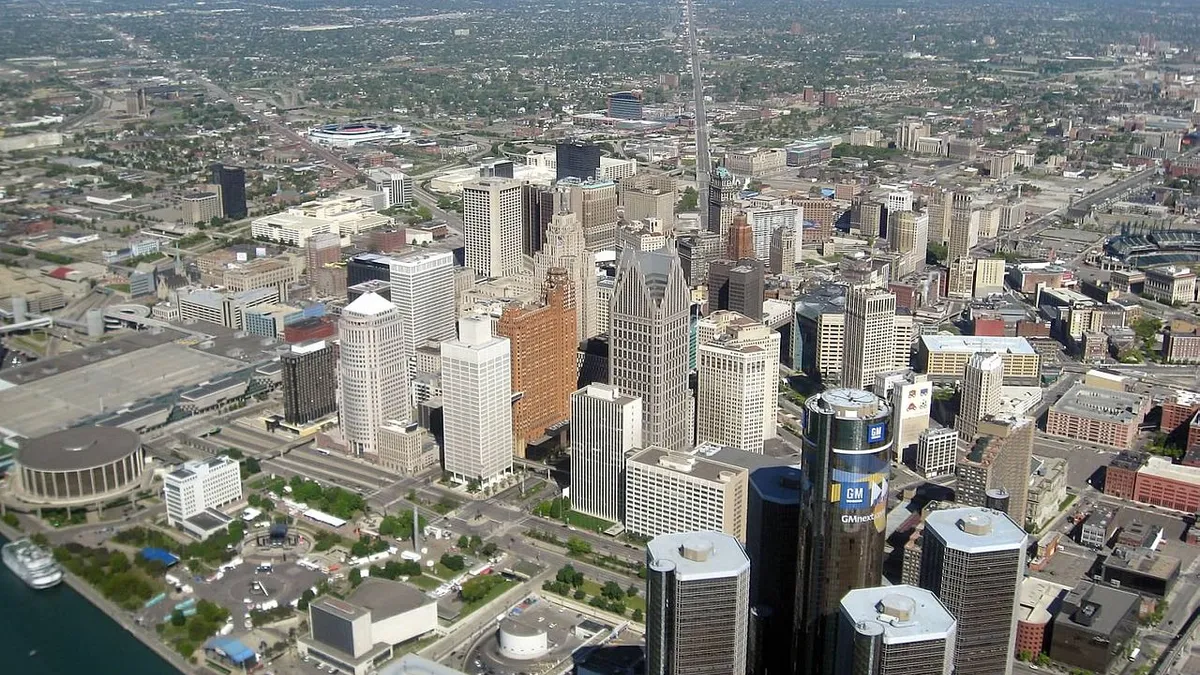Dive Brief:
- Detroit Mayor Mike Duggan has released a robust, sweeping roadmap, Strategic Plan for Transportation, to improve mobility and transportation infrastructure in the city.
- The plan contains 82 strategies and action items to take place over the next four years, falling under five main categories: economic opportunity, public safety, city vibrancy, communications and outreach and strengthening city functionality.
- Major initiatives include rebranding the Detroit Department of Transportation (DDOT), revamping and increasing service on DDOT's bus program, installing 50 new bus shelters, using smart traffic signals to improve traffic flow and give pedestrians more crossing time, installing traffic calming measures, reworking loading and parking signs to improve curbside space, expanding the MoGo bike-share system and expanding the protected bike lanes that were piloted this year.
Dive Insight:
This plan is a wide-reaching strategy that involves participation from dozens of city departments and dozens of outside partners. "A new level of collaboration between city departments is necessary to achieve the goals of this plan," Duggan said in the roadmap.
Detroit's transportation and transit challenges are well known and have been blamed for holding back progress in the city. Some leaders and citizens have cited the lack of general transportation infrastructure and an expansive public transit system as a major reason Amazon overlooked the city for HQ2. Without a solid transit network extending outside of the city center, many Detroit residents are heavily reliant on cars, adding to the region's traffic woes.
Motor City is experiencing some innovation on the autonomous vehicle front, with numerous companies developing and testing technologies to autonomous vehicles (AVs), but those vehicles won't be able to achieve widespread adoption in the very city where they're developed without infrastructure upgrades. Part of the transportation plan is to add more smart technologies, such as the high-tech streetlights to ease traffic congestion.
City leaders recognize that Detroit's revitalization that has occurred since its financial difficulties came to a head a decade ago will not continue spreading without better citizen mobility. They want to provide better access to jobs, commerce and recreational activities to further drive economic development and create a more livable community. And with growth comes even greater demand on streets and sidewalks.
The new plan is not the only attempt to improve mobility in the region. Wayne County Executive Warren Evans proposed a massive regional transit plan earlier this year that would reach residents in underserved portions of the metro region, but the proposed tax millage to fund the plan did not have enough support to make this November's ballot. Leaders could try again next year. Some successful mobility measures have occurred in the past few months, including partnerships such as the one between Lyft and Detroit bike-share operator MoGo.
The strategic plan goes beyond the smaller scale partnerships and pilot programs to take a multi-pronged, multi-partner approach to boosting mobility. It aims to make getting around Detroit easier, safer, more reliable and more affordable, and it wants to make a drastic difference in just four years.












